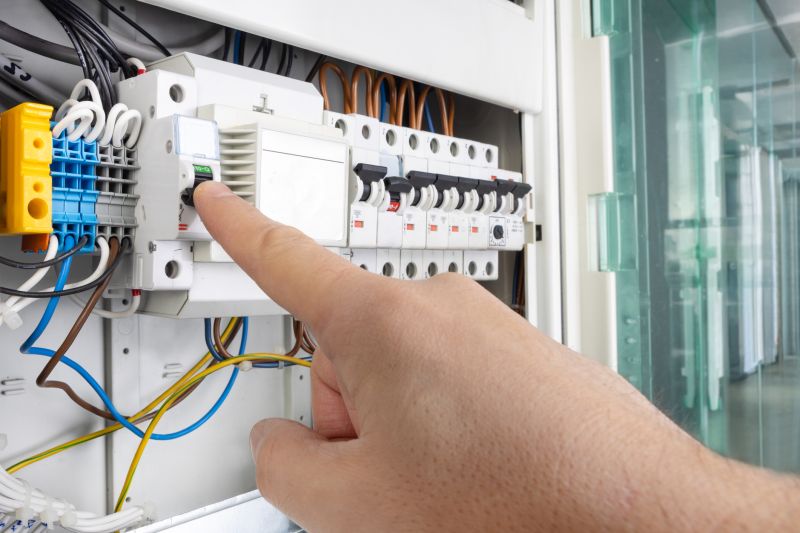Favorite Tools And Products For Electrical Panel Modernization
Equip yourself with the most recommended tools and parts to upgrade your electrical panel efficiently and effectively.
 Upgrading an electrical panel is a significant step in ensuring the safety and functionality of a building's electrical system. As electrical demands grow or older panels age, it becomes necessary to enhance capacity, improve safety features, or modernize the system to meet current standards. Selecting the right products for an electrical panel upgrade involves understanding various components, from main panels and circuit breakers to wiring and accessories. Proper installation and compatible components are essential to maintain safety and ensure the system performs reliably. Whether upgrading for increased load capacity, adding new circuits, or replacing outdated equipment, choosing quality products tailored to specific needs can help facilitate a smooth and effective upgrade process.
Upgrading an electrical panel is a significant step in ensuring the safety and functionality of a building's electrical system. As electrical demands grow or older panels age, it becomes necessary to enhance capacity, improve safety features, or modernize the system to meet current standards. Selecting the right products for an electrical panel upgrade involves understanding various components, from main panels and circuit breakers to wiring and accessories. Proper installation and compatible components are essential to maintain safety and ensure the system performs reliably. Whether upgrading for increased load capacity, adding new circuits, or replacing outdated equipment, choosing quality products tailored to specific needs can help facilitate a smooth and effective upgrade process.
Types of Products For Electrical Panel Upgrades
Main Breaker Panels
Central panels that house the main disconnect and multiple circuit breakers, suitable for various load requirements.
Subpanels
Additional panels used to extend capacity or separate circuits in larger or complex electrical systems.
Circuit Breakers
Devices that protect individual circuits from overloads and short circuits, available in various types and ratings.
Surge Protectors
Devices designed to shield electrical systems from voltage spikes and transient surges.
Arc Fault Circuit Interrupters
Specialized breakers that detect arc faults and shut off power to prevent fires.
Ground Fault Circuit Interrupters
Breakers that protect against ground faults, reducing the risk of electrical shock.
Transfer Switches
Devices that enable switching between utility power and backup generators for continuous power supply.
Wiring Accessories
Connectors, bus bars, and terminal blocks that facilitate safe and organized wiring within panels.
Smart Circuit Monitors
Devices that provide real-time monitoring of electrical usage and system health.
Lockable Panel Covers
Security features to prevent unauthorized access to electrical panels.
Neutral and Ground Bus Bars
Components that facilitate proper grounding and neutral connections within panels.
Labeling Systems
Tools and kits for clear identification of circuits and components inside panels.
Popular Choices
Widely selected for its capacity to accommodate future circuit additions and safety features.
Popular for providing comprehensive circuit protection in modern electrical systems.
Commonly used to safeguard sensitive electronic equipment from voltage spikes.
Trending for their ability to track energy consumption and system status remotely.
Preferred for expanding existing systems in limited spaces or specific zones.
Increasingly chosen for enhanced fire prevention in residential wiring.
Commonly installed in wet areas to reduce shock hazards.
Popular for safety and security in commercial and multi-family residential settings.
Frequently used to improve organization and safety during electrical upgrades.
Trending for integrating generators seamlessly into the electrical system.
Commonly selected for efficient neutral and ground connections.
Essential for ensuring neat and safe wiring within panels.
When considering an electrical panel upgrade, it is important to evaluate the existing electrical infrastructure and future requirements. This includes assessing the total electrical load, the number of circuits needed, and any specific safety features required such as surge protection or arc fault detection. Compatibility with existing wiring and adherence to local electrical codes are critical factors to keep in mind. Investing in durable, reliable components can reduce the risk of electrical faults and improve overall system longevity. While DIY upgrades are possible in some cases, consulting a licensed electrician ensures that all components are correctly installed and compliant with safety standards.
Upgrading your electrical panel can also involve integrating smart technology, such as circuit monitoring or remote control capabilities. These advancements can provide better oversight of electrical usage and help identify issues early. Regardless of the scope, thorough planning and selecting the right products are key to achieving a safe and efficient electrical system. Properly chosen components not only enhance safety but also support the electrical needs of modern appliances and devices. By understanding the options available and the considerations involved, homeowners and professionals can make informed decisions that align with their specific electrical upgrade goals.
Key Buying Considerations
- Ensure compatibility with existing electrical system components.
- Assess the total electrical load and future expansion needs.
- Verify that the product meets local electrical codes and standards.
- Consider the number of circuits and breaker slots required.
- Look for durable construction materials for longevity.
- Evaluate safety features such as surge protection, AFCI, and GFCI options.
- Determine if smart monitoring or remote control features are desired.
- Check for ease of installation and accessibility of components.
- Consider security features like lockable covers for safety.
- Review manufacturer specifications for maximum load ratings.
- Assess the size and space requirements within your electrical enclosure.
- Choose products with clear labeling and organization options.
- Think about future upgrades and whether the product allows for easy expansion.
- Select components from reputable manufacturers with good support options.
- Ensure all components are rated for your specific voltage and current requirements.
